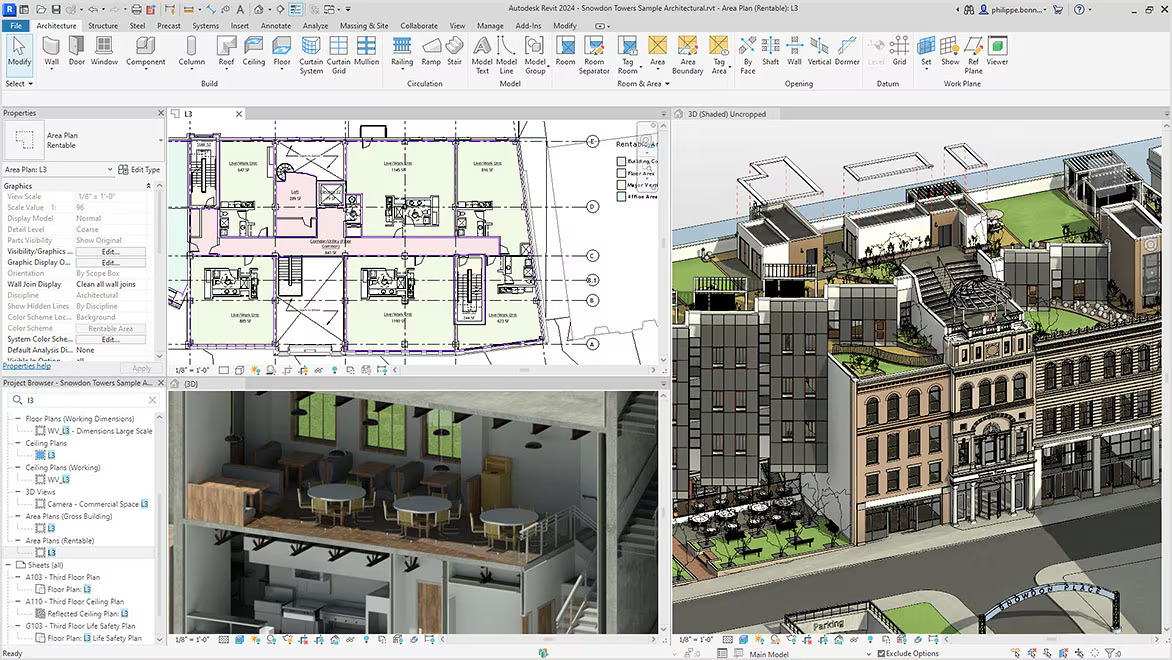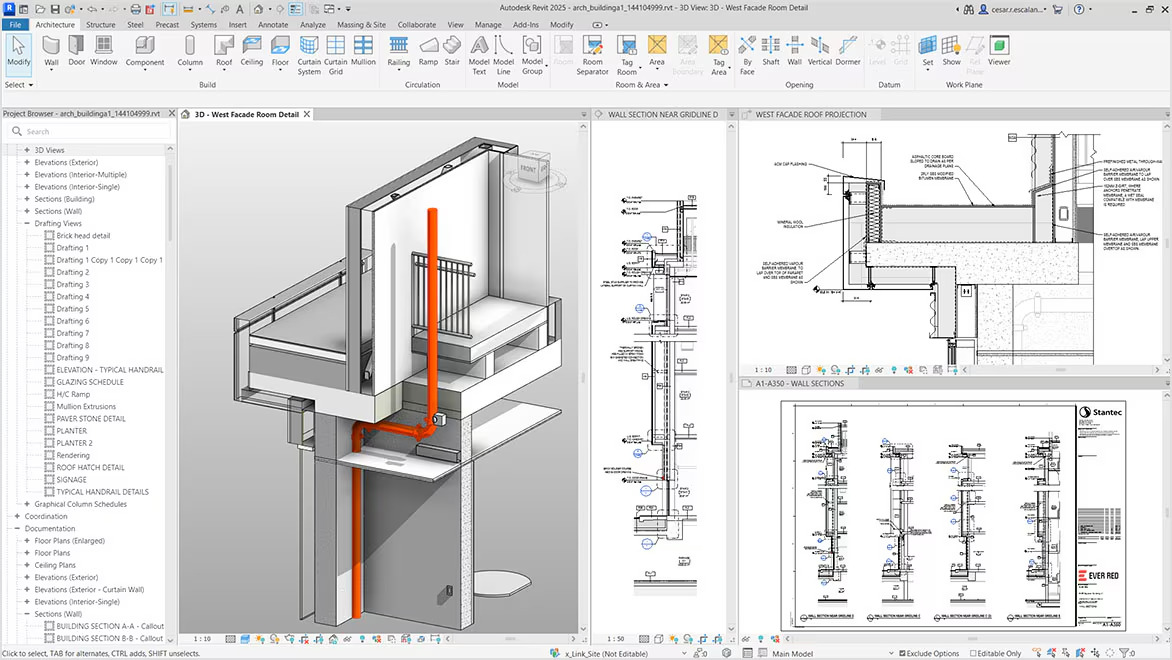- Home
- Articles
- Architectural Portfolio
- Architectral Presentation
- Inspirational Stories
- Architecture News
- Visualization
- BIM Industry
- Facade Design
- Parametric Design
- Career
- Landscape Architecture
- Construction
- Artificial Intelligence
- Sketching
- Design Softwares
- Diagrams
- Writing
- Architectural Tips
- Sustainability
- Courses
- Concept
- Technology
- History & Heritage
- Future of Architecture
- Guides & How-To
- Art & Culture
- Projects
- Interior Design
- Competitions
- Jobs
- Store
- Tools
- More
- Home
- Articles
- Architectural Portfolio
- Architectral Presentation
- Inspirational Stories
- Architecture News
- Visualization
- BIM Industry
- Facade Design
- Parametric Design
- Career
- Landscape Architecture
- Construction
- Artificial Intelligence
- Sketching
- Design Softwares
- Diagrams
- Writing
- Architectural Tips
- Sustainability
- Courses
- Concept
- Technology
- History & Heritage
- Future of Architecture
- Guides & How-To
- Art & Culture
- Projects
- Interior Design
- Competitions
- Jobs
- Store
- Tools
- More
Why BIM Is Revolutionizing the Architecture Industry: Key Benefits and Innovations
Discover how Building Information Modeling (BIM) is revolutionizing the architecture industry by enhancing precision, collaboration, and sustainability. Learn about its transformative impact on design, project management, and real-world applications, as well as the challenges and future potential of this groundbreaking digital technology.

The architecture industry is undergoing a transformative shift, and at the heart of it is Building Information Modeling (BIM). This innovative approach is changing how we design, plan, and execute projects, offering a level of precision and collaboration we’ve never seen before. It’s not just a tool; it’s a game-changer that’s reshaping the way buildings come to life.
With BIM, we’re able to visualize projects in incredible detail, streamline workflows, and reduce costly errors. It empowers architects, engineers, and contractors to work together seamlessly, creating smarter, more sustainable structures. As the demand for efficiency and sustainability grows, BIM is proving to be the key to staying ahead in a competitive industry.
This isn’t just a trend—it’s a revolution. Let’s explore how BIM is transforming the architecture world and why it’s become an essential part of modern design and construction.

Table of Contents
ToggleUnderstanding BIM: A Game Changer in Architecture
BIM is transforming how we approach architectural design and construction. Its ability to integrate data, visualization, and collaboration redefines efficiency and precision in the industry.

What Is BIM?
BIM, or Building Information Modeling, is a digital process for creating and managing detailed representations of physical and functional project elements. It uses intelligent 3D models that store critical data about a structure’s design, construction, and operations. Unlike traditional 2D drafting methods, BIM integrates geometry, spatial relationships, and building system information into a single platform. This approach ensures design consistency and streamlines communication among design, engineering, and construction teams.
For example, a BIM model can include structural details, like material specifications or load analyses, alongside timelines and cost estimations, ensuring that all stakeholders access the same centralized information.
Key Features of BIM Technology
- 3D Visualization
BIM enables real-time visualization of projects in 3D, providing insight into spatial configurations and aesthetics. Architects can create realistic simulations that identify design conflicts before construction begins.
- Data Integration
BIM connects different project data, such as structural analysis, material requirements, and environmental impact. This unified approach ensures informed decision-making at every stage.
- Clash Detection
BIM software identifies design clashes, such as overlapping mechanical and electrical systems, during the planning phase. Resolving these issues digitally reduces on-site errors and minimizes costly delays.
- Collaboration Tools
BIM facilitates team collaboration by centralizing data for architects, engineers, and contractors. Cloud-based platforms, like Autodesk Revit or BIM 360, allow simultaneous work on shared models.
- Lifecycle Management
BIM supports the entire lifecycle of a building, from design through maintenance. It helps property managers track performance data, schedule maintenance tasks, and optimize energy efficiency.
Each feature enhances project efficiency while reducing waste and unexpected changes. Together, these capabilities establish BIM as indispensable in modern architectural workflows.
Benefits of BIM for the Architecture Industry
BIM is transforming architecture by driving efficiency and improving project outcomes. It offers significant advantages by addressing challenges in collaboration, design accuracy, and resource management.

Enhanced Collaboration and Communication
BIM centralizes project data, enabling teams to work together on a single platform. Shared 3D models allow architects, engineers, and contractors to access and update information in real time. This minimizes miscommunication and ensures alignment across project phases. For example, stakeholders can visualize designs early and address potential issues collaboratively, reducing rework and delays.
Improved Design Accuracy and Efficiency
By integrating intelligent 3D modeling tools, BIM increases design precision. It allows for detailed simulations that highlight spatial, structural, and functional conflicts before construction begins. Automated processes, like clash detection and design validation, eliminate errors and optimize workflows. For instance, architects can streamline revisions using parametric modeling, ensuring consistency throughout the design lifecycle.
Cost and Time Savings
BIM reduces project expenses and accelerates timelines through optimized resource allocation. Early-stage error detection prevents costly on-site adjustments, while detailed material estimates reduce waste. Scheduling tools, integrated into BIM workflows, enable efficient sequencing of construction activities, saving time. For example, pre-construction simulations help refine budgets and identify faster alternatives.
How BIM is Shaping the Future of Architecture
Building Information Modeling (BIM) is redefining how architects approach design and construction, pushing the boundaries of sustainability, technology integration, and project management. Its influence is transforming the industry into one that prioritizes efficiency and innovation.

Sustainability and Green Building Solutions
BIM enables the creation of energy-efficient designs by integrating analysis tools for performance simulations. With features like energy modeling and daylight analysis, we can evaluate a structure’s environmental impact before construction. For instance, simulations conducted during the planning phase help reduce energy consumption by optimizing building orientation, materials, and mechanical systems. BIM also assists in tracking sustainable certifications such as LEED by managing compliance data and ensuring green standards are met throughout a project’s lifecycle.
Integration with Emerging Technologies
BIM seamlessly integrates with technologies like artificial intelligence (AI), virtual reality (VR), and Internet of Things (IoT), enhancing design-to-construction workflows. VR combined with BIM allows clients to immerse themselves in 3D models, offering realistic previews and informed decision-making. We also see AI tools optimizing material usage and construction schedules based on data inputs directly linked to BIM platforms. IoT integration provides real-time building performance monitoring, connecting smart systems with operational data for intelligent facility management.
Enhanced Project Management
Centralized models in BIM improve coordination between multidisciplinary teams while streamlining schedules and budgets. With clash detection tools identifying conflicts early, we avoid costly delays during construction. Moreover, dynamic scheduling linked to live project updates ensures every phase of the project aligns with timelines and resources. Teams relying on BIM benefit from enhanced transparency, as shared access to unified data improves accountability and aligns project goals across stakeholders.
Real-World Examples of BIM in Action
BIM’s application in architecture has demonstrated its transformative potential through groundbreaking projects and practical insights gained from its implementation. These examples showcase how BIM drives innovation and efficiency in the industry.

Iconic Projects Leveraging BIM
The Sydney Opera House Renewal Project utilized BIM for its complex refurbishment needs. By creating a centralized model of the historic structure, the team improved coordination, reduced risks, and ensured preservation accuracy.
In Singapore, the Marina Bay Sands integrated BIM for its intricate design and construction. This approach allowed seamless collaboration among global teams, precise scheduling, and efficient resource allocation for its iconic curved towers.
The Crossrail Project in London incorporated BIM to manage infrastructure complexity across 10 new stations and 42 km of tunnels. By using clash detection and performance simulations, the team minimized delays and ensured stringent compliance with safety and design standards.
Lessons Learned from Successful Implementations
Integrated workflows ensure project consistency. For example, in the Shanghai Tower project, using a shared BIM framework enabled real-time updates across disciplines, reducing miscommunication and rework.
Data-driven decision-making enhances project feasibility. In the Qatar World Cup Stadiums, BIM’s energy analysis tools supported sustainable designs, illustrating how early performance simulations influence long-term efficiency.
Proactive issue resolution minimizes on-site challenges. For instance, BIM’s clash detection in the Barakah Nuclear Power Plant in the UAE eliminated major design conflicts before construction, saving time and costs.
Challenges and Limitations of BIM
Despite its transformative impact, Building Information Modeling (BIM) faces challenges that impact its broader adoption and effective implementation in the architecture industry. These challenges primarily stem from adoption barriers and expertise gaps in the workforce.

Adoption Barriers in the Industry
Adoption issues persist due to significant cost and resource commitments. Implementing BIM software, upgrading hardware, and providing advanced training involve high initial investments that can strain small to mid-sized firms. For example, expenses related to purchasing licenses for BIM platforms like Revit or ArchiCAD and ensuring compatibility with existing systems deter widespread adoption.
Another hurdle includes resistance to change. Established firms often adhere to traditional workflows, hesitating to disrupt existing processes. This resistance grows when stakeholders underestimate the long-term benefits of BIM compared to its upfront demands. Compatibility issues between BIM tools and older methodologies further compound adoption reluctance.
Addressing Learning Curves and Expertise Gaps
Mastering BIM technologies requires expertise that many professionals lack. The transition from traditional drafting or CAD systems to BIM involves steep learning curves, especially for senior professionals accustomed to conventional methods. Insufficient training programs exacerbate this challenge, leaving teams ill-prepared to fully utilize BIM’s capabilities.
Additionally, specialized roles like BIM managers or coordinators are essential but scarce, causing resource shortages. Without skilled professionals to oversee BIM implementation, teams face inefficiency in modeling, coordination, and data sharing. For instance, improper model management can lead to errors or miscommunication during the design and construction phases.
Addressing these hurdles requires consistent upskilling initiatives and robust support systems to bridge the knowledge gaps while ensuring efficient tool integration.
Why BIM is Essential for Architects Today
BIM streamlines processes throughout the building lifecycle, making it indispensable for modern architects. By integrating 3D modeling and data management, it enhances precision and efficiency in every phase of a project.

-
Enhanced Design Capabilities
BIM empowers architects to create detailed, dynamic designs. Intelligent 3D models allow us to analyze spatial relationships, simulate building performance, and optimize layouts before construction. This proactive approach reduces design errors and improves outcomes.
-
Seamless Collaboration
Centralized BIM platforms promote teamwork. Teams from architecture, engineering, and construction access the same data, ensuring design consistency and early conflict resolution. This reduces inefficiencies and fosters better communication across project stakeholders.
-
Resource Optimization
BIM minimizes material waste and streamlines project schedules. By accurately simulating construction sequences and resource usage, we ensure cost-effective execution. This supports sustainable practices while adhering to project budgets.
-
Data-Driven Decision Making
Embedded data in BIM models supports informed choices. We can evaluate energy performance, lifecycle costs, and maintenance needs from the outset. This enables designs aligned with environmental goals and user requirements.
-
Lifecycle Management
BIM extends beyond design and construction to building operation. Facility managers can leverage model data for maintenance tasks, performance monitoring, and renovations. This lifecycle support ensures long-term value for clients and end-users.
These advantages establish BIM as an essential framework for navigating the architectural challenges of today, where precision, collaboration, and sustainability propel successful outcomes.
Conclusion
BIM is transforming the architecture industry by bridging gaps in collaboration, enhancing design accuracy, and optimizing resource management. Its ability to integrate 3D modeling, data-driven decision-making, and lifecycle management into one platform improves every stage of a project. With proven success in iconic projects like the Crossrail Project and Sydney Opera House Renewal, BIM demonstrates its capability to tackle complex architectural challenges efficiently.
The adoption of BIM aligns with the industry’s focus on sustainability and technological innovation. It supports energy-efficient design through performance simulations, material optimization, and alignment with certifications like LEED. Integration with AI, VR, and IoT elevates project workflows, offering immersive experiences and real-time insights. This synergy fosters transparency, accountability, and precision in construction, making BIM a cornerstone of modern architecture.
Despite challenges like high implementation costs and steep learning curves, BIM’s benefits far outweigh these limitations. Its potential to reduce errors, streamline communication, and support sustainable practices solidifies its role as a revolutionary tool. By embracing BIM, architectural professionals position themselves to meet evolving demands, delivering innovative and efficient design solutions.
- Architecture design BIM
- Architecture industry innovations
- Architecture industry trends BIM
- BIM architecture benefits
- BIM for sustainable architecture
- BIM impact on architecture
- BIM implementation in architecture
- BIM in architectural design
- BIM in construction
- BIM software for architects
- BIM technology advantages
- BIM tools for architects
- BIM trends in construction
- Building Information Modeling benefits
- Building Information Modeling innovations
- digital transformation in architecture
- Future of architecture with BIM
- Innovative BIM solutions
- Revolutionizing architecture with BIM
- Role of BIM in modern architecture
Submit your architectural projects
Follow these steps for submission your project. Submission FormLatest Posts
BIM in Architecture: What You Need to Know for Smarter Building Design
Discover how Building Information Modeling (BIM) is transforming architecture with intelligent 3D...
The Future of Architecture: How the BIM Industry Is Changing Design and Construction
Explore how Building Information Modeling (BIM) is revolutionizing architecture with enhanced collaboration,...
How the BIM Industry is Transforming Modern Construction Practices for a Better Future
Discover how Building Information Modeling (BIM) is revolutionizing the construction industry by...
The Role of BIM in Revolutionizing Construction Projects: Improving Efficiency and Collaboration
Discover how Building Information Modeling (BIM) is revolutionizing the construction industry by...












Leave a comment